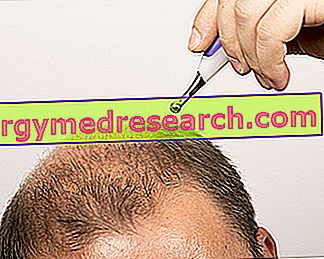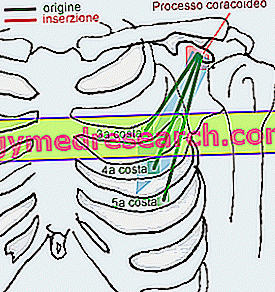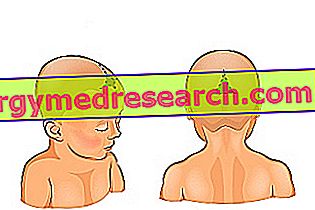Baldness is the most common name for "normal hair loss" (NOT a disease).
Also known as "androgenetic (or androgenic) alopecia", it predominantly affects males compared to females (around 80% versus 50%).

In particular, the androgen metabolite dihydrotestosterone (DHT) appears to be involved. This is formed in the follicles thanks to an enzyme called 5-alpha-reductase type 2.
The effect of this physiological mechanism is a reduction of the growth time in favor of the involutional and resting time.
It follows a progressive thinning of the hair that affects specific areas in men and is more uniform in women.
When hair is no longer sufficient to cover the scalp, baldness becomes evident and overt.
Recall that, in genetically predisposed subjects, baldness is inevitable. Any kind of treatment has a delaying effect or a time-limited effect.
What to do
The remedies for baldness are few and not too effective:
- Pharmacological in nature:
- Minoxidil.
- Finasteride.
- Transplants.
- Alternative thickening techniques.
What NOT to do
We reiterate once again that, in most cases, baldness is hereditary and can rarely be stopped and even less reversed.
On the other hand, the statistical data indicate that there are predisposing factors of a behavioral and environmental nature.
These include:
- Smoking: smokers show more hair loss than non-smokers. Some studies suggest an aggravation of baldness that reaches 80% on average. The value increases with the number of cigarettes consumed; from 20 or more, the risk reaches 130%. The mechanism is likely to affect the damage to the scalp blood vessels or the alteration of hormonal metabolism.
- Incomplete, incorrect or unbalanced diet: people who introduce an insufficient amount of protein and less than 1000kcal / day are more prone to baldness. Hair growth requires: amino acids, vitamins and mineral salts. In particular, biotin (vitamin H), pantothenic acid (vitamin B5), iron and zinc are useful for hair growth.
- Psycho-physical stress: not only can it aggravate, but sometimes triggers baldness (especially diffuse alopecia). It is certainly a determining factor, since it shortens the growth phase of the hair and promotes inflammation of the hair roots.
What to eat
Nutrition mainly affects the severity of baldness.
If some nutritional principles fail, the growth of the hair is compromised.
Furthermore, some foods contain nutrients and nutritional elements that can affect the production of dihydrotestosterone.
Useful foods are those that contain:
- Biotin or vitamin H: especially in meat, fishery products, eggs, milk and derivatives. It is present in a little bioavailable form in vegetables, in some fruits and in certain legumes.
- Pantothenic acid or vitamin B5: especially in offal and legumes, in the form of coenzyme A and phosphopanthenine.
- Iron: especially in meat, in fishery products and in egg yolk.
- Zinc: especially in meat, in fishery products, in cereals, in legumes and in dried fruit.
- Plant sterols: especially in oil seeds or in the germ of starchy seeds and in extraction oils. Some examples are soy, sunflower seeds, some palm trees etc.
What NOT to Eat
There is no list of foods that can harm hair and facilitate baldness.
However, it is unequivocally accepted that they can be counterproductive:
- Alcohol abuse.
- Diets based exclusively on preserved and cooked food.
- Monothematic diets.
- Exclusively carnivorous diets.
- Vegan diet.
Natural Cures and Remedies
Natural remedies for baldness are less effective than pharmacological ones but have a lower level of side effects. Furthermore, they can be taken as an adjunct to drug therapy. Most are also used for benign prostatic hypertrophy.
In particular, after stopping the treatment, hair loss resumes in an identical manner to the initial phase.
The natural products for oral use used against baldness are:
- Serenoa repens: is a South American palm tree rich in triglycerides, phytosterols, flavonoids and sitosterol derivatives. It appears to have anti-androgenic properties that act directly on dihydrotestosterone receptors and indirectly by inhibiting the 5-alpha-reductase enzyme. The dose is 1-2g / day of crude drug or 320mg / day of standardized extract.
- African pigeo: it is a tree of equatorial Africa whose bark is rich in phytosterols, fatty acids, triterpenoids and alcohols. The mechanism of action is of slight inhibition on the enzyme 5-alpha reductase. The daily dose is 75-200mg / day of lipidosterolic extract to be taken in divided doses and with a full stomach.
- Pumpkin seeds: these are the seeds contained in the fruits produced by the pumpkin plant. Rich in lipophilic molecules, they provide a significant amount of betasterols that seem to partially inhibit the conversion of testosterone into dihydrotestosterone. The daily dose is 10g of whole unsalted seeds or 500mg / day of extract.
The natural products used against topical baldness have three functions: astringent, eudermic and stimulating the microcirculation.
These remedies must necessarily be applied with the massage / friction of the scalp.
They can be divided into:
- Alcoholic solution: just a few drops. Examples of ingredients are extracts of: walnut, elm, thyme and burdock.
- Aqueous solution: examples of ingredients to be infused are: soap, nettle, rosemary and chili pepper.
Pharmacological care
There are two pharmacological remedies for baldness approved by the Food and Drug Administration (FDA):
- Minoxidil: is a topical product. It has superior efficacy in the vertex area (above the nape). Its mechanism of action is not entirely clear.
- Finasteride: is a drug for oral use. It counteracts the action of the enzyme 5-alpha-reductase type 2.
Both require at least 3-6 months of application and are most effective when baldness is in an early or intermediate state.
- The sulfate estrone is a drug used almost exclusively for the treatment of FEMININE androgenic alopecia (in humans the suitability of this therapy must be carefully considered). To be used topically, the sulfate estrone works by prolonging the hair growth phase.
Prevention
Prevention of baldness is unclear and relatively effective.
It might help:
- Keep your stress level low.
- Avoid or stop smoking and / or drinking alcohol.
- Eat in a balanced way, paying attention to the nutrient rations we have already discussed (vitamins and minerals).
- Make use of natural topical and food remedies (including supplements) at the first sign of slowing growth.
Medical treatments
The medical treatments used as a remedy for baldness are 2:
- Surgical redistribution of hair follicles: also called autograft, it consists of the removal of hair from other areas (for example the nape) to insert them where necessary.
- Trichological epithesis on a polymer base: it is an alternative thickening technique. It is considered a natural method. It involves the construction of a synthetic prosthesis obtained through a mold of the area to be thickened. This is provided with real hair, initially coming from other donors and subsequently integrated with those of the subject.



